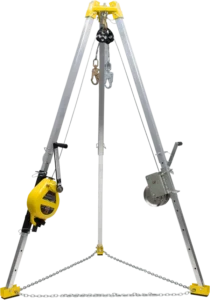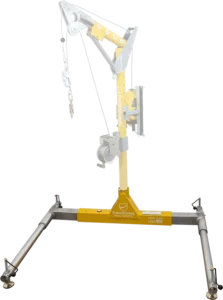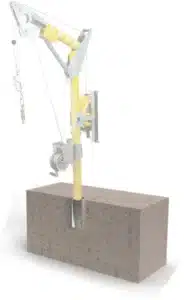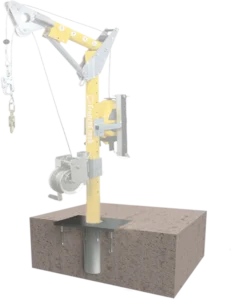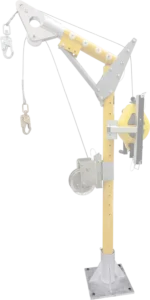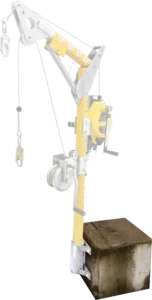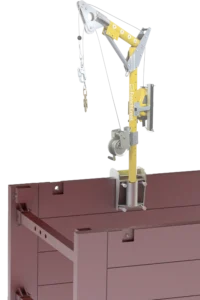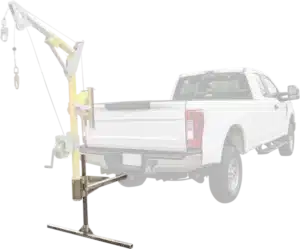Your cart is currently empty!
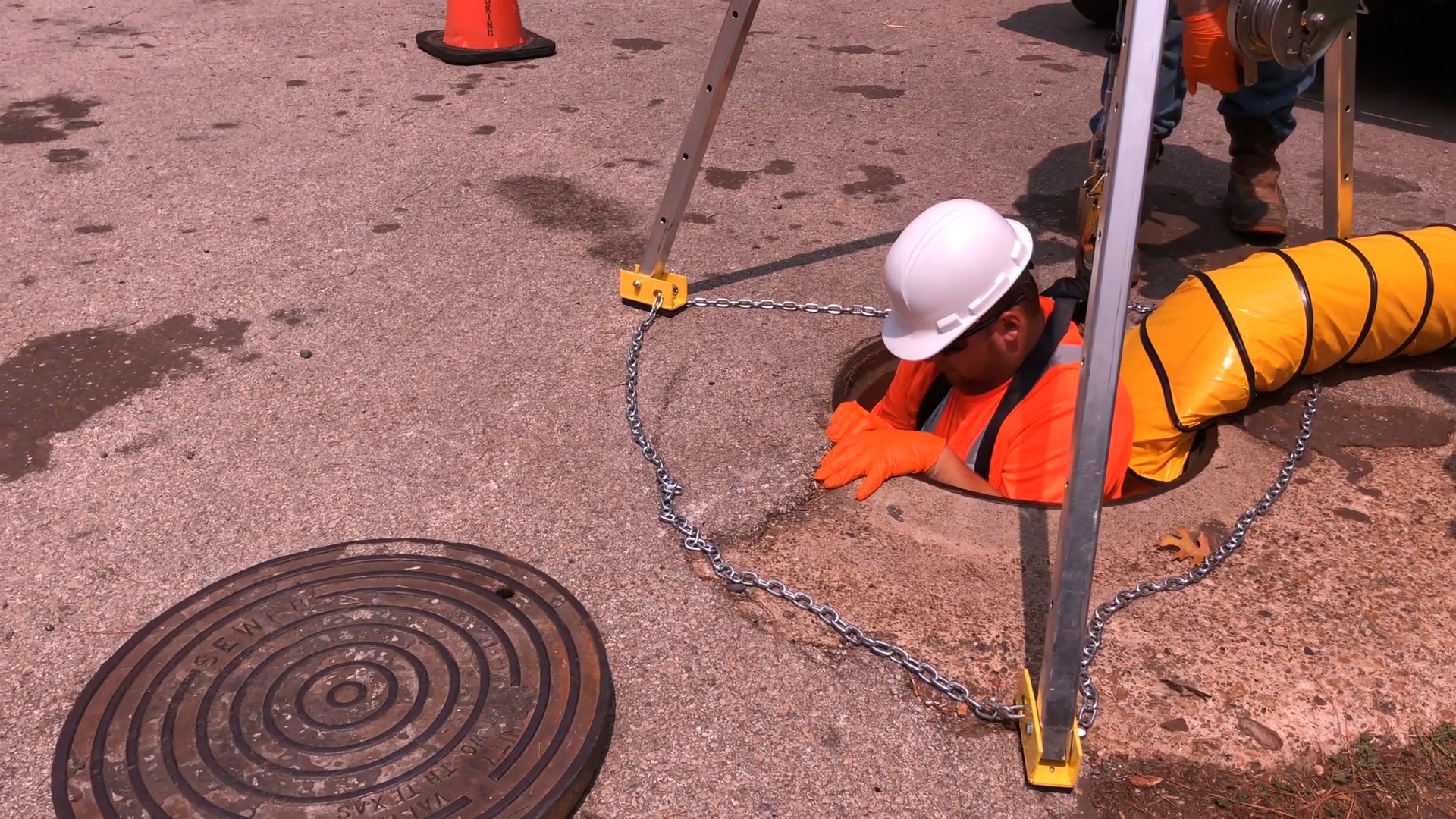
Build Your Confined Space Rescue Plan
Planning a confined space rescue program isn’t just about ticking a compliance box—it’s about ensuring the safety of every worker who enters a manhole, tank, vault, or any other confined area.
Whether you’re starting from scratch or upgrading your current setup, this guide will walk you through how to build a complete, OSHA-compliant confined space system using FrenchCreek’s modular equipment.
ENHANCE YOUR CONFINED SPACE PROGRAM WITH A CUSTOMIZED SAFETY SYSTEM
Every job site is different—and your confined space rescue plan should be too. Whether you’re outfitting a single access point or standardizing procedures across multiple facilities, FrenchCreek makes it easy to build a system that fits your environment, your crew, and OSHA requirements.
From lightweight tripods to modular davit systems with specialized mounting options, every FrenchCreek component is engineered for real-world durability and seamless compatibility. With clear guidance on how each part fits into your setup, you can stop guessing and start building.
Our equipment is ANSI/OSHA compliant, supported by expert advisors, and ready to ship. Whether you’re starting from scratch or upgrading an existing program, we’ll help you create a confined space plan that puts safety—and simplicity—first.
What Is a Confined Space Rescue Plan?
A confined space rescue plan outlines the equipment, roles, and procedures required to safely remove someone from a confined environment in the event of an emergency. OSHA requires that any worker entering a permit-required confined space must have a retrieval system in place unless it increases risk.
FrenchCreek makes planning and executing that system simple, using components that are easy to mix, match, and deploy.
What Should Be Included in a Confined Space Rescue Plan?
- Hazard assessment of the confined space
- Entry/exit procedures
- Assigned roles (entrant, attendant, rescue)
- Equipment checklist (tripod/davit, SRL, winch)
- Rescue and retrieval procedure
- Communication and atmospheric testing plan
Choosing the Right Confined Space Equipment for the Job
Here’s a quick overview of putting together the right equipment:
- All systems are built from a tripod or PD1 davit mast.
- Rescue and work winches can be added to each system.
- There are 8 davit base options, each tuned to a specific mounting environment.
| Feature | Tripod System | Davit System |
| Portability | Temporary | Temporary with permanent base options |
| Adjustability | Fixed height (TP7 or TP9) 7′ or 9′ | 12″-30″ offset reach (PD1 mast) |
| Mounting Requirements | None beyond flat ground | One of 8 base types required |
| Rescue Device Compatibility | Direct mount (no brackets needed) | PD3 bracket required |
| Winch Compatibility | Direct mount | PD4 bracket required |
| Ideal Use Case | Mobile, short-term jobs | Interchangeable bases suit various confined space uses. |
Step 1: Choose Your Foundation – Tripod vs Davit System
FrenchCreek confined space systems are built around one of two anchoring structures: a tripod or a davit mast system. Which one you choose depends on how and where you’ll be using the equipment.
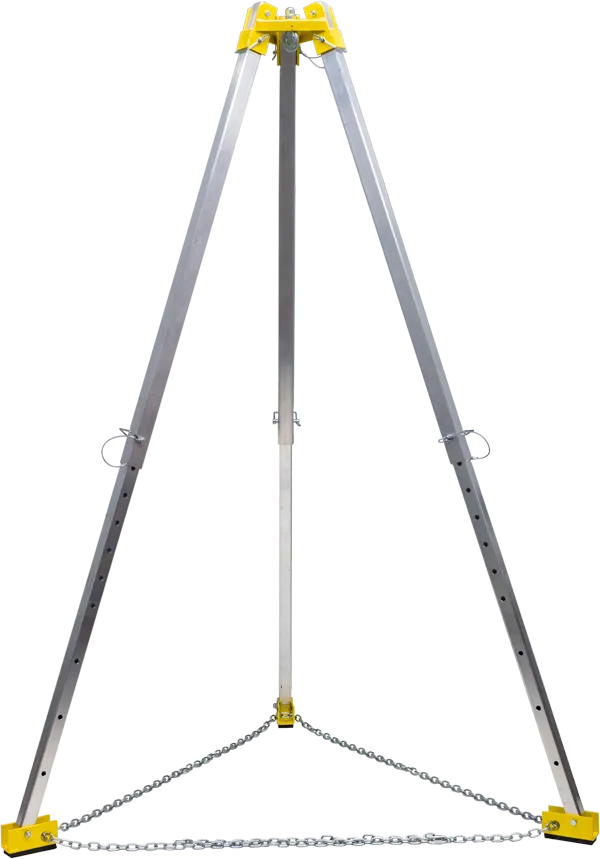
Tripod Systems
They’re ideal for temporary or mobile setups and can be set up by one person.
Best for:
- Utility crews working over manholes
- Temporary job sites or field service teams
- Quick rescue deployment
Tripod-compatible devices include:
- R50 Series Rescue SRLs – self-retracting lifelines with winch capabilities
- MW Series Work Winches – controlled lifting/lowering for tools or personnel
Complete tripod system kits include:
- TP7 or TP9 Tripod
- R50G, R50SS, or R50T (50′ galvanized, stainless, or Technora rope)
- MW50G, MW50SS, MW50T (50′ or 100′)
Example: The S50G-M7 kit includes a TP7 Tripod, R50G Rescue SRL, and MW50G Winch.
More Details Here: PDF 63
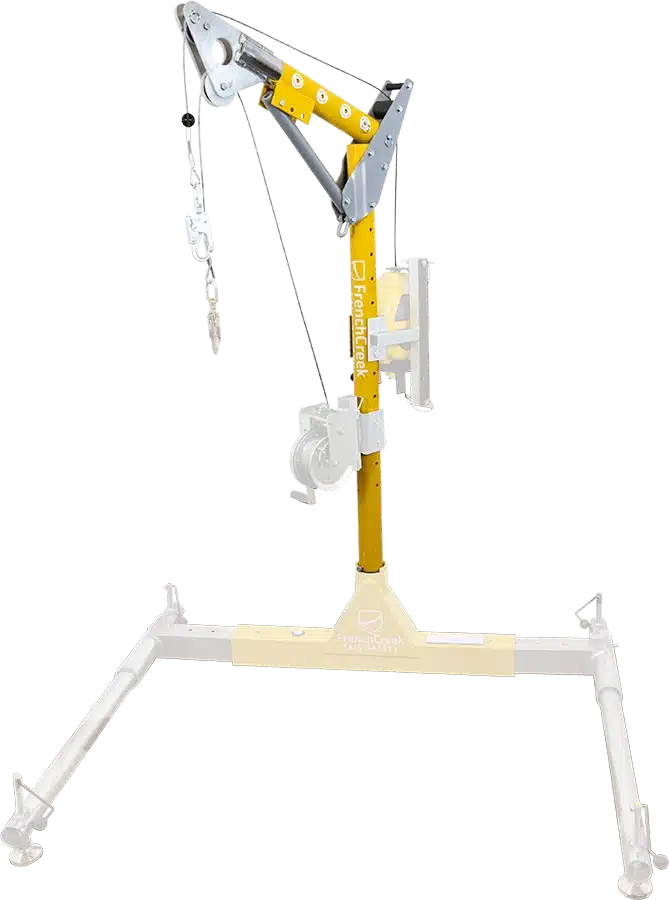
Davit Systems
If you encounter a variety of confined space applications, a davit system is a great solution, thanks to its interchangeable base options
Best for:
- Facilities with permanent tanks or vaults
- Sites needing vertical entry along walls or platforms
- Rescue vehicles and high-traffic access points
The core of every davit system is the PD1 Davit Mast Assembly. From there, you pair it with one of eight mounting bases based on your environment:
- PD2: Portable
- PD5: Core-drilled concrete
- PD6: New concrete (cast-in)
- PD7: Existing concrete/steel floors
- PD8: Vertical surfaces (wall mount)
- PD9: Tanks/barrels
- PD10: Vehicle/trailer hitch
- PD11: Trenchbox mount
Note: To add your rescue unit or work winch, you’ll need PD3 and/or PD4 mounting brackets. PD3 for the rescue unit, and PD4 for work winch operations. These secure your devices to the PD1 mast safely and ensure proper function during rescue or retrieval.
Davit System Overview
| Component | Description | Use Case | Required Hardware |
| PD1 | Davit Mast | Core davit structure | Required |
| PD2-PD11 | Mounting Bases | Anchoring methods for PD1 | One required |
| PD3 | Bracket for R50G SRL | Rescue & Fall Protection applications | Required |
| PD4 | Bracket for MW50G Winch | Raising/Lowering Workers | Required if you have no primary means of entry (ladder) |
Step 2: Add Your Rescue Unit and Work Winch
Once you’ve chosen the davit base required for your jobsite, it’s time to add the gear that enables actual entry and fall protection.
R50 Series – Rescue SRLs
- 3-way self-retracting lifeline
- Raising/lowering capabilities
- Dual internal braking system
- Includes pulley, carabiner, and load-indicating snap
- Available in galvanized, stainless, or Technora rope
- PD3: Bracket to mount R50G to PD1 mast
MW Series – Work Winch
- Manual lifting and lowering with friction brake
- Prevents free-wheeling under load
- Compatible with all tripod and davit systems
- 50′ or 100′ options across all lifeline materials
- PD4: Bracket to mount MW50G to PD1 mast
NOTE: For tripod setups, no additional mounting hardware is required. For davits, you’ll need a PD3 & PD4 mounting brackets.
Need Help Planning Your Confined Space Rescue System?
Our team of safety experts is here to help. Whether you’re outfitting one location or standardizing a company-wide confined space program, we’ll help you identify the right tripod or davit system, the compatible rescue and winch gear, and the mounting hardware you need to stay compliant and safe.
Common Confined Space Planning Mistakes (and How to Avoid Them)
Even experienced teams can make costly mistakes when planning a confined space rescue system. Here are the most common issues and how FrenchCreek helps you avoid them.

1. Choosing the Wrong System
Tripods are great for mobile setups, but sometimes the footprint required for a tripod system isn’t feasible for every confined space. This is where a davit system shines with the options for interchangeable bases.
Tip: Use tripods for portable jobs and davits for recurring access points.

2. Forgetting Brackets for Davit Systems
Unlike tripods, davits require mounting brackets:
- PD3 for the R50G Rescue SRL
- PD4 for the MW50G Work Winch
Tip: Don’t skip these! Your devices won’t attach without them.

3. Not having a rescue plan in general
A confined space rescue system is only part of the equation—without a clear, documented plan, even the best equipment can’t ensure a safe outcome.
Tip: Develop and communicate a site-specific rescue plan before work begins, and review it regularly.
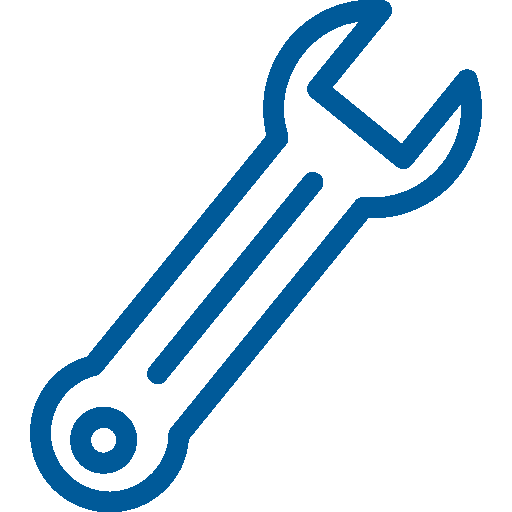
4. Using the Wrong Winch for the Job
Not all rescue and retrieval equipment is built for the same task. Choosing the wrong device can reduce effectiveness—or worse, lead to equipment failure. Some tools are designed for emergency-only use, while others are built for routine personnel movement.
Tip: Use the R50G strictly for fall protection and emergency rescue. For regular raising and lowering of personnel, use the MW50G. The R50G is not designed for repeated lifting and lowering and can be damaged by misuse.

5. Overlooking OSHA Rescue Requirements
OSHA requires immediate, non-entry rescue when possible. Missing equipment like a winch or SRL could mean non-compliance.
Tip: Make sure your system includes a retrieval device and a proper anchor.

6. Skipping Training
Rescue gear is only as effective as the crew using it.
Tip: Conduct regular hands-on training and drills.
Confined Space Rescue Plan Requirements (OSHA & ANSI)
To comply with OSHA and ANSI, your confined space rescue plan must include properly rated equipment, clear procedures, and trained personnel. Here’s what’s required and how FrenchCreek helps you meet every standard.
Recommended Reading: Understanding The Differences Between OSHA and ANSI
OSHA Requirements (29 CFR 1910.146)
- Non-entry rescue systems must be used unless they pose additional risk.
- Retrieval systems must allow for immediate rescue.
- R50G SRL enables 3-way rescue (fall arrest, retrieval, lowering).
- Anchor points must support 5,000 lbs. or a 2:1 safety factor.
- FrenchCreek’s tripods and davits meet 5,000 lb. load ratings.
- Workers must be trained in use and emergency procedures.
ANSI Standards (Z359, Z117.1, 1910.66)
- Covers fall protection, equipment strength, braking systems, and inspection.
- R50 rescue units and MW50 work winches meet and exceed Z359 & 1910.66 specs.
- Requires performance-labeled, traceable, and tested components.
- Devices feature dual braking, load indicators, and serial tracking.
Shop Confined Space Entry Systems
View some of our most popular confined space rescue equipment below. We offer a full collection of confined space entry products including davits, tripods, brackets and more.
Need Help Planning Your Confined Space Rescue System?
Every FrenchCreek confined space component is designed to help you avoid mistakes, stay safe and stay compliant. If you’re unsure about your setup or upgrading an older system, we’re here to help.
